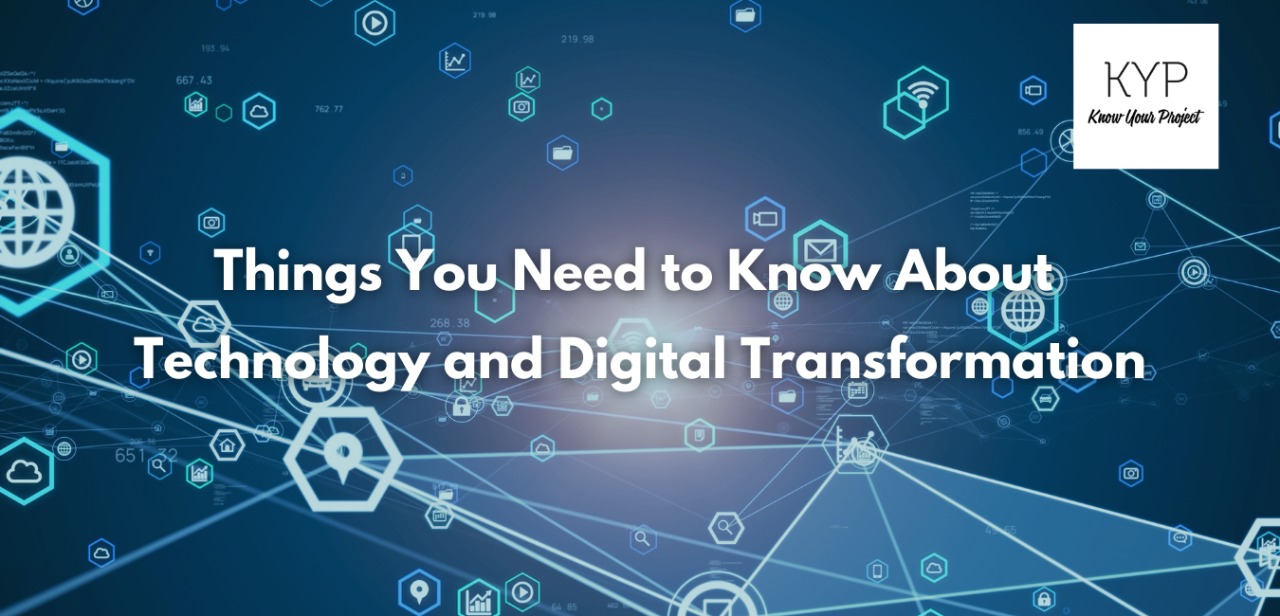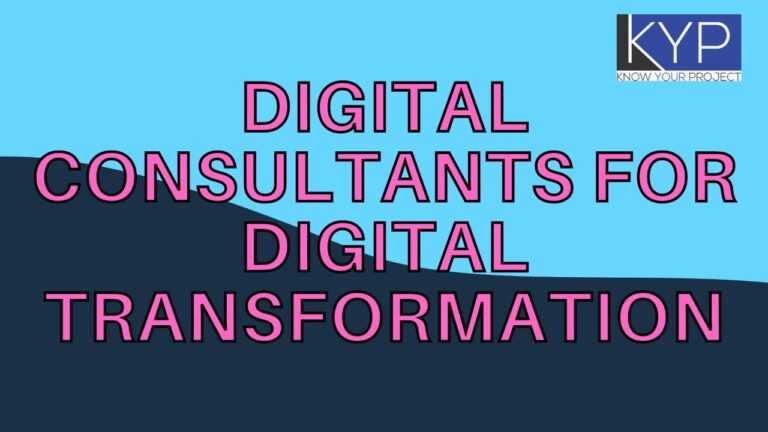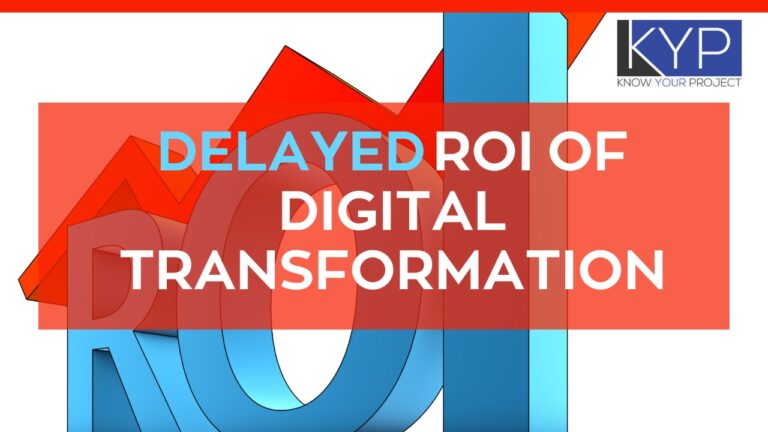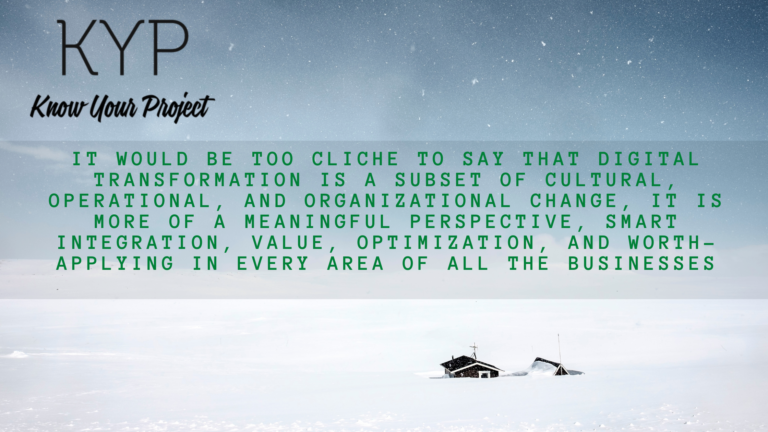5 Things You Need to Know About Technology and Digital Transformation
Modern technology and digital transformation are two ways a business can survive today by using advanced levels of tech and processes that are out there. By transforming your business, you not only get it online and to a much bigger audience but are also able to reap significant benefits of this move in the future.
ITPro lists 5 reasons why digital transformation is absolutely necessary.
Digital transformation means bringing your products and services to the internet. The internet is growing on a daily basis and thousands of people would want to use your products and services. The internet can take your business to the sky, but only if used properly.
All the big businesses of the world are already on the internet. It’s very simple, get your business to the internet efficiently or risk its death. Decreased cost and fewer risks are two obvious major advantages. Keep the business updated with the latest trends and make good money for years to come.
Technology and digital transformation need to go hand in hand. Your personnel and processes need to be managed efficiently in the future. The change shouldn’t be sudden, but gradual and steady.
But enough beating around the bush and let’s get to the point! These are the five steps a business can use to implement modern technology and business transformation efficiently and effectively.
1. Clarifying the Goals, Parameters and Metrics for Success
Using modern technology and digital transformation requires determining your goals. This is the most obvious step. Is your audience going to be the same as it currently is? Will there be newer ways to reach newer audiences? What about existing products, and maybe any new ones to be sold?
Big decisions and strategies need to be addressed and decided upon over here, so care must be given to this step. The top-level management needs all the feasible ideas they can get. Holes and inefficiencies that exist within the organization and plans need to be identified and addressed quickly.
2. Managing Tech Change for Competitive Survival
No company is safe from digital transformation and modern technology. If the biggest yellow cab service in NYC can file for bankruptcy because of Uber taking over, then believe us when we say this, managing change and innovation is critical to survival and growth.
Massive changes are coming into the automobile industry all over the world, as an example. Even if companies who aren’t interested in researching and developing self-driving and cars that are electric, they’re forced to do so because of the rising competition in that sector and also for having a fear of being left, first in the dust, and then as a footnote in books of history.
This needs to be considered much, much earlier in the planning and development phases. The sooner these challenges are considered, the sooner all the risks, hurdles and rewards will be noticed as well
3. Designing Innovation from the End-User Perspective
End-user or customer experience is the best starting point for project design and needs to be considered well before implementing any new strategy. What are the potential benefits of a the digitally transformed service to users and what are the likely shifts in user behaviour, including employees and customers that need to be managed to achieve a positive impact on people?
How can you work towards future-proofing for both existing and emergent technologies such that the technology and digital transformation end-user experience feels intuitive? For instance, OpenView lists 3 ways to have a faster and much more intuitive user experience.
No matter who is using the end product or service, it should fulfil all the demands and achieve a satisfying experience. Whether it’s a customer getting groceries online or your finance department checking financial records, all of it needs to be done with an intuitive and positive experience
4. Aligning the old with the new
While the first three steps talk about the future, this step talks about the present. All existing processes, apps, tools and software need to integrate with your new plans.
However, integrating new technology into your current business for and digital transformation purposes is no mean feat. Making key decisions about IT and managing the risks of changeover needs to be executed steadily to make it as seamless and issue-free as possible.
That means you need to discover and address the critical components of your digital strategy first of all. Identifying where current processes cannot work will enable you to make timely decisions of what to eliminate or replace with newer technology and methods.
5. Adjusting Infrastructure to Suit New Methods of Working
With digital transformation, the traditional C-suite roles usually need adjusting. Successful innovation projects tend to have a dedicated group of specialist professionals on your team who can deliver.
This can be achieved by designating additional responsibilities where appropriate or establishing entirely new positions within the company. For instance, establishing Chief Digital Officer (CDO) and Chief Information Officer (CIO) roles help to supervise and oversee the entire end-to-end process.
If a person with the required level of expertise cannot be found and supported within the organization, you may need to bring someone from outside to get the job done.
You might need outside people or agencies to hire better-qualified employees for the future. Upgrades might be needed in the training process as well.
A whole new business culture will develop out of this move of digitally transforming the business
This point reminds me to the question—(before we move forward to the conclusion)
Have you worked with tech consultants in the past to help you implement digital transformation and it hasn’t worked out so well?
Well, yes – I hear you! In fact, I hear it all the time, how it’s a tug of war back and forth where all you end up with is more slippage.
And that’s why what we do is different. Here’s how:
We act as intermediaries in getting our client’s project back on track, based on our experience of reviewing problem projects, having difficult conversations across teams AND being both IT and digital project planning experts.
And without this, there’s the risk of your business coming out badly from a failed digital initiative, losing all the investment, and even shutting down (worst case scenario).
Avoiding that scenario and getting things back on track is what we do, successfully and (reasonably) painlessly.
Conclusion:
The five steps I’ve outlined here for making your digital transformation project work are what makes it possible to take a business to new heights of success.
The question is do you need help finding the most cost-effective ways to implement these key success steps?
Of course, there are many other ‘hidden’ factors at play too, the more nuanced elements of digital transformation that are specific to your industry, company and team.
But we’ve compiled the most common ones a business might face as a starting point for discussion
References:
https://www.itpro.co.uk/strategy/29899/three-reasons-why-digital-transformation-is-essential-for-business-growth
https://openviewpartners.com/blog/intuitive-user-experience-design









